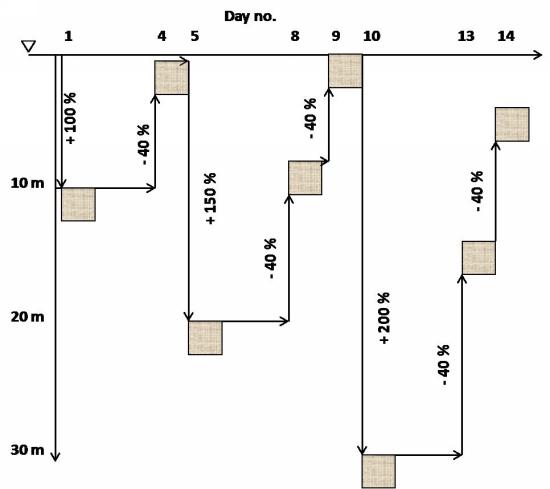|
Biological criteria
PhD thesis: Biological criteria for successful submergence of physoclistous Atlantic cod (Gadus morhua) and physostomous Atlantic salmon (Salmo salar L.) reared in sea-cages
Øyvind’s PhD research is within the SubCage Biology project. In addition to research investigating the tolerances of both salmon to submergence described earlier, specific experiments are aimed at determining safe limits for raising and sinking Atlantic cod in submerged cages. Background In contrast to the open swim bladder of salmon, the closed swim bladder system in cod causes limitations for rapid vertical movement. The time needed for cod to double the pressure in their swim bladder increases with increasing pressure, from a few hours near the surface, to several days at hundreds of metres. The rate of gas secretion also increases with temperature. Deflating the swim bladder is a faster process; a 50% pressure reduction takes 3-4 hours (Harden Jones & Scholes 1985, Strand et al. 2005). Buoyancy challenges related to pressure reduction are greatest near the surface where the largest relative change in pressure occurs. A fast ascent corresponding to 60-70 % pressure reduction caused swim bladder rupture in cod kept in a pressure chamber (Tytler and Blaxter, 1973). Righton et al. (2001) followed individual cod in the sea, and suggested 25% reduction and 50% increase in pressure as limits for cod to maintain proper buoyancy control. Based on observed maximum pressure reduction chosen by free swimming DST-tagged cod in a 35 m deep cage, a pressure reduction of 40% is suggested by Kristiansen et al. (2006) as the upper limit for handling farmed cod. In this study we aimed to make a safe procedure for lifting of Atlantic cod kept in sea cages. Material and methods Figure 1 Submergence and lifting steps for Atlantic cod in the experiment.
Results and discussion |
PhD fellow
Øyvind Korsøen
Co-supervisors
Tim Dempster (SINTEF Fisheries and Aquaculture) |

